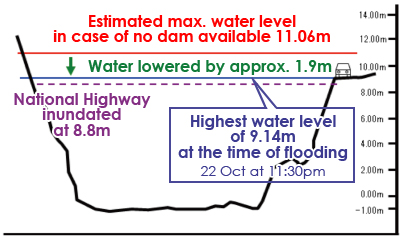Celebrating 50th anniversary of management at Takayama Dam
- Aiming to stay friendly with the local community -
30 July, 2019
Takayama Dam is one of the dams constructed under the Basic Plan for Yodo River Improvement to learn the lesson from the severe flood disaster caused by Typhoon No. 13 in September 1953. It is located in
Minamiyamashiro Village, the last village left in
Kyoto Prefecture. This village is nature-rich and known, for Japanese tea and shiitake mushroom production. The dam reservoir named Tsukigase Lake is located in among three prefectures, i.e. Mie, Nara, and Kyoto. As
Takayama Dam is celebrating 50th anniversary in August 2019 since its management start, we would like to take this opportunity and introduce its role and activities here, as follows:
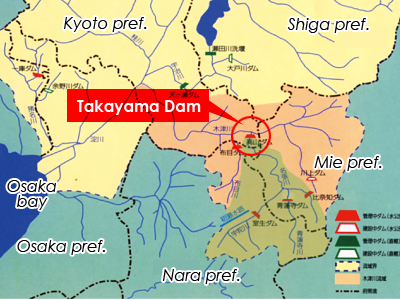
Location of Takayama Dam
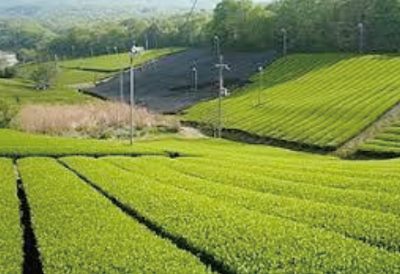
Tea plantation in Minamiyamashiro Village (near "Nature House of Minamiyamashiro Village")
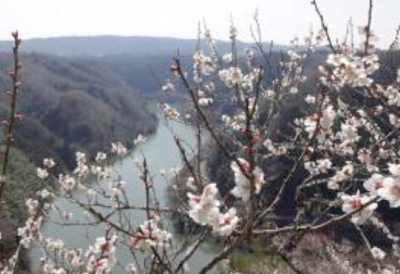
Tsukigase plum-grove

Cultivated shiitake mushrooms
1. Outline of Takayama Dam
Takayama Dam was constructed at the downmost-stream of the Nabari River*, a tributary of the Kizu River of the Yodo River system. The purposes of the dam are 1)flood control, 2)maintenance of proper river water function, 3)new water utilization, and 4)hydropower generation. It has been working as one of the key infrastructures to support the development of Keihanshin (Kyoto-Osaka-Kobe) district since its management start.
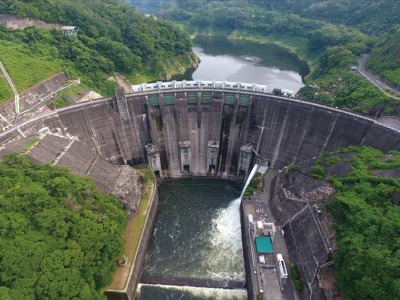
Takayama Dam (Gravity type arch dam)
The purposes of the dam
1) Flood control
When there is rainfall over the upstream of the dam, it discharges 1,8000m³/s of water out of 3,400m³/s of design flood discharge and keeps the remaining 1,6000m³/s of water in the dam reservoir to mitigate the flood damage downstream of the river.
2) Maintenance of proper river water function
The dam retains the proper river water function to secure the necessary river water flow downstream for the supply of irrigation water for the farmland downstream and keep the sound river environment.
3) New water utilization
Newly developed water at Takayama Dam is stably supplied for domestic water by max. 5.0m³/s to many cities in Osaka and Hyogo prefectures.
4) Hydropower generation
At the Takayama Power Plant of Kansai Electric Power Co., Inc., max. 6,000 kW of electricity is generated, making use of the discharge from the dam (max. water use: 14.0m³/s).
*The Nabari River is a Class-A river and hasa total extension of 62 km and the 615 km² of total basin area. It has three tributaries of the Uda River, Shorenji River, and Hinachi River.
2. 50-year management history
1) Dam's maintenance management
At Takayama Dam, we have been getting hold of the reservoir conditions through water quality checks and patrols to achieve the project purposes. We have also been doing their utmost to share the collected information and communicate smoothly with the relevant organizations. To find out the degradation and failure of the facilities and the equipment, we are conducting the patrol of the facilities and performing the necessary inspections and maintenance whenever necessary. As to the aging facilities, we prepare the dam's long-life plan stipulated in the mid-to-long term maintenance management policy. Following the plan, we endeavor to implement the planned maintenance management, with the total cost reduction in mind.
2) Mitigation of Flood damage downstream of the dam
At Takayama Dam, we have implemented the flood control for 17 times between1969 and 2018 since its management start.
At the time of Typhoon No. 10 in July 1982, they recorded the most significant inflow of 2,765m³/s.
Besides, at the time of Typhoon No. 18 in September 2013, there was a large amount of rainfall in the broad area of Yodo River system, and the group of dams in the Kizu River system including Takayama Dam carried out the integrated operation which suppressed the discharge from each dam and stored water as much as possible while considering the available capacity of respective reservoirs. It contributed to the alleviation of the flood damage in the downstream area of the Yodo River.
Also, at the time of Typhoon No. 21 in October 2017, we had 2nd most significant inflow of 2,294m³/s. Even though the situation was difficult, we conducted flood control at Takayama Dam, and succeeded in lowering the water level by about 1.9m at the Ariichi observation point downstream of the dam compared to the case of no dam available. As a result,we managed to reduce the inundation time of National Highway 163 from 8hours to 5.5 hours.
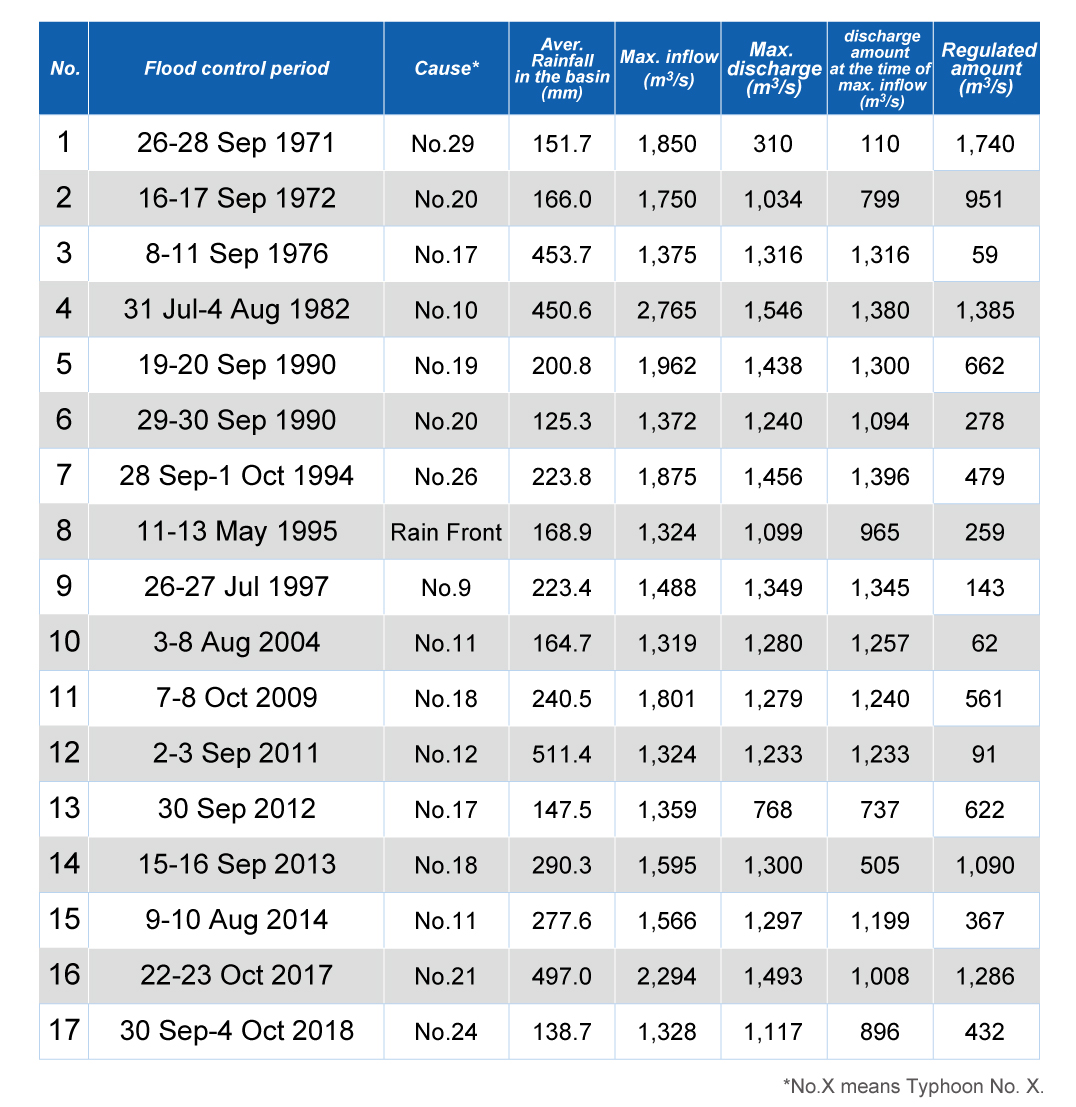
Flood control performance since the start of management
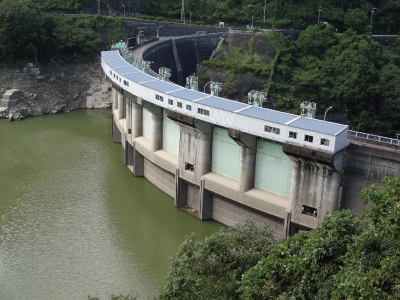
Takayama Dam during the normal operation (Flood season)
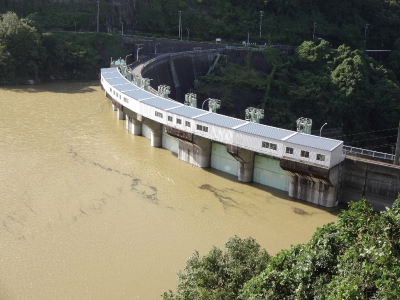
Takayama Dam during the flood control operation(Typhoon No. 18 in 2013)
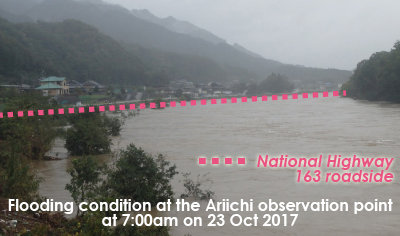
Water level lowering effect at the Ariichi observation point (Typhoon No. 21 of 2017)
3) Maintenance of normal functions of river water and new water utilization
(1) Maintenance of normal functions of river water
About 3,300ha of farmland are extended along the Kizu River. For irrigation* of that farmland, Takayama Dam secured minimum river flow of 12.0m³/s including some from Shorenji Dam, at the Ogawara observation point downstream during the irrigation period and minimum river flow of 6.0m³/s during the non-irrigation period. Takayama Dam has also worked for the conservation of the river environment.
*The irrigation period of Takayama Dam is between 16 June and 15 September.
(2) New water utilization
Takayama Dam supplies domestic water for many cities in Osaka and Hyogo prefectures. The benefited area was hit by the drought in the summer and winter of 1994, and water intake was restricted by 10%. However, the integrated and flexible dam operation at a group of dams in the Yodo River system, including Takayama Dam and Shorenji Dam enabled those water users to avert water supply suspension and other serious consequences.
4) Hydropower generation
Takayama Power Plant of Kansai Electric Power Co., Inc. was constructed at the same time as Takayama Dam was built and its annual power generation reached approx. 30,000MWH and the electric power is transmitted to Minamiyamashiro Villageand other nearby districts. Its annual power generation is equivalent to the power consumption of 6,000 to 8,000 households.
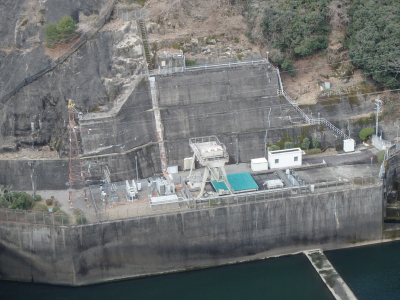
Takayama Power Plant (Downstream of Takayama Dam)
5) Water quality improvement and environmental conservation
Takayama Dam reservoir used to have eutrophication progress. In 1984 and afterward, overgrowth of phytoplankton such as algae blooms and fresh red-tide had caused the water quality deterioration every year. To deal with such a problem, the Construction Ministry (currently MLIT) and WARDEC (currently JWA) were mainly involved in formulating the countermeasures.
In FY1998 "MLIT or subsidized projects for reservoir water quality protection" (the MLIT directed project) started. Between FY1999 and FY2003, aerating circulation facilities* were installed for water quality conservation. As a result, since 2003 and onward, such overgrowth of phytoplankton has not mostly been doccurred.
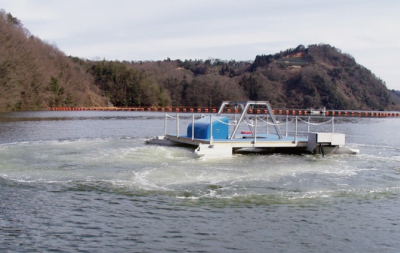
An aerating circulation facility
*This is the device used to contain the growth and concentration of phytoplankton by circulating the reservoir water as the dam reservoir is vast and deep.
In addition, since FY2002, JWA has been working to recreate semi-natural water flow downstream of the dam by the temporary increase of discharge amount from the dam (i.e. flashing discharge) to create the right habitat for fish and algae.
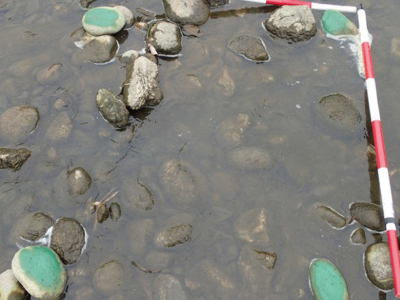
Flashing discharge effect (Before)
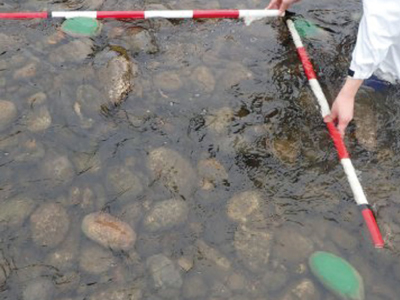
(After)
6) Coordination with local communities
At around Takayama Dam, open space areas surrounding the dam in four districts of Minamiyamashiro Village of Kyoto Prefecture, Nara City and Yamazoe Village of Nara Prefecture, and Iga City of Mie Prefecture were developed from FY1986 to FY1995 to create more natural environment-oriented comfortable zone. Nowadays in those areas, various outdoor activities are held.
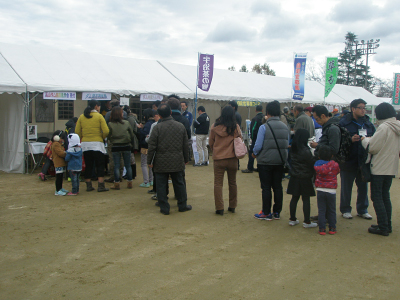
Vibrant Village Festival (Takayama Dam booth)
Those outdoor activities include Takayama Dam Long Distance Relay Race, Tsukigase Plum-grove Early Spring Marathon in February, Tsukigase Regatta in July, and Yamashiro District Junior High Long Distance Relay Race in October. Furthermore, in November Minamiyamashiro Village holds "Vibrant Village Festival" at the village's multi-purpose open field adjacent to Takayama Dam. During the festival, the JWA office exhibits a booth showing the profile of Takayama Dam, arranges tours for the visitors to explore the inside of the dam body, and patrol boat cruises, etc. for PR and coordination with the local community.
As the road station "Kyoto Tea Village of Minamiyamashiro" recently opened, JWA began a dam site bus tour together with the road station as a new approach for community services.
3. Closing
We are pleased to have our 50th anniversary of management at Takayama Dam under the cooperation of people of water source areas, related water utilization organizations, national and prefectural governments.
Since the management start, we have been working hard to contribute to the development of social foundation of Hanshin (Osaka-Kobe) district in such a way as mitigation of flood damages of the Kizu River and Yodo River, river environment conservation and domestic water supply to the district.
We will keep working for the quality management, fully executing the purpose of the dam as the operator of long-loved and local-friendly Takayama Dam supported by the kind understanding and cooperation of people.









